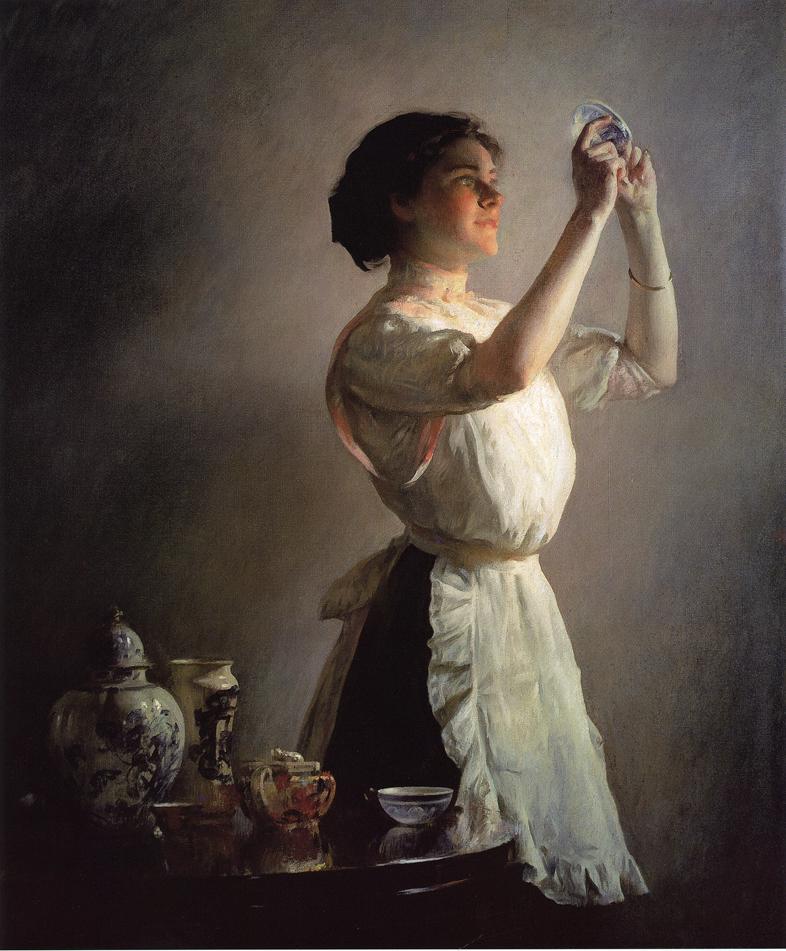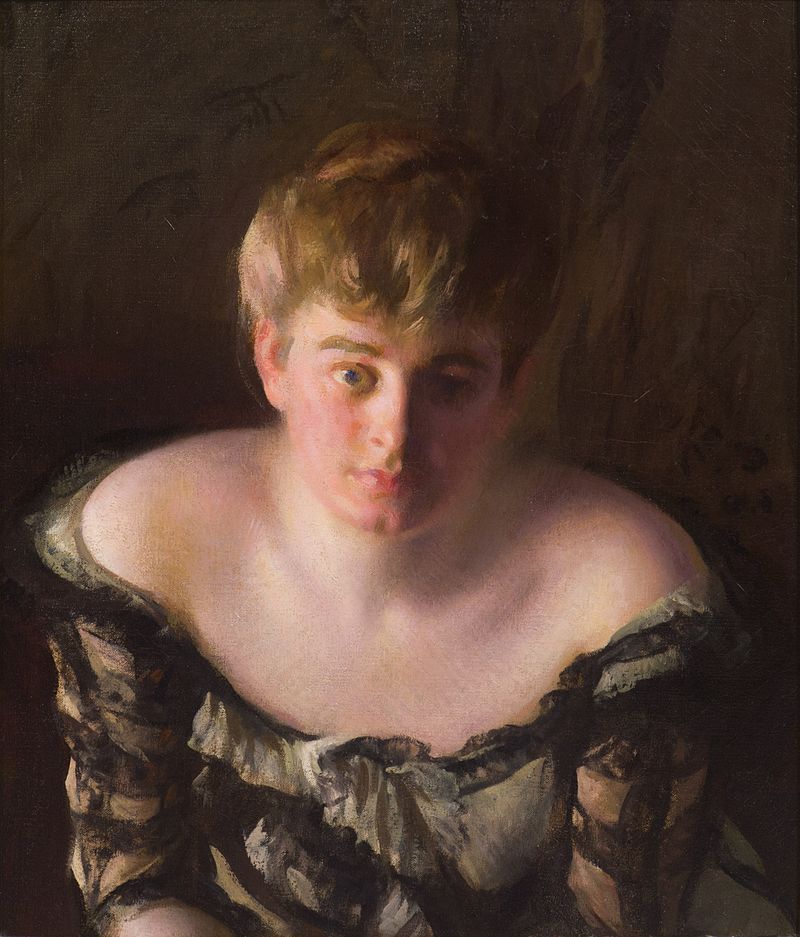
Joseph Rodefer DeCamp (1858–1923) was an American painter known for his contributions to the American Impressionist movement and his remarkable talent for capturing the effects of light and color in his portraits and genre scenes. His work bridged the gap between traditional academic art and modernist approaches, making him a prominent figure in American art during the late 19th and early 20th centuries.

- Early Life: Joseph DeCamp was born on November 5, 1858, in Cincinnati, Ohio, and showed an early aptitude for art. His parents recognized his talent and encouraged his artistic pursuits.
- Education: In 1873, at the age of 15, DeCamp began his formal art education at the McMicken School of Design in Cincinnati. Later, he moved to New York City to attend the National Academy of Design, where he studied under notable artists such as Thomas Wilmer Dewing and Robert Swain Gifford.
- Study in Europe: Like many aspiring American artists of his time, DeCamp traveled to Europe to further his artistic education. He spent several years studying at the Académie Julian and the École des Beaux-Arts in Paris, immersing himself in the techniques of the French academic tradition.
- Return to the United States: DeCamp returned to the United States in the mid-1880s, bringing with him the influences of French academicism and Impressionism that would later shape his style.
- Boston School: DeCamp was a founding member of the Boston School, a group of artists in Boston who were influenced by Impressionism and focused on portraiture and genre scenes. He became closely associated with this group and exhibited regularly with them.
- Signature Style: DeCamp’s style evolved over time, and he is known for his skill in capturing the effects of light and color in his paintings. He often used a limited palette, employing a harmonious balance of colors to create a sense of atmosphere and mood.
- Portraiture: DeCamp was renowned for his portraits, which were characterized by their sensitivity and meticulous attention to detail. His portraits captured the character and individuality of his subjects, and he painted portraits of prominent figures of his era.
- Influence: DeCamp’s work had a significant impact on American art, and he influenced many artists who admired his mastery of technique and his ability to combine traditional and modern elements in his paintings.
- Awards and Exhibitions: Throughout his career, DeCamp received numerous awards and accolades for his art. He exhibited at prestigious venues, including the Paris Salon and the National Academy of Design.
- Teaching Career: DeCamp also had a successful teaching career. He taught at the Massachusetts Normal Art School (now part of Massachusetts College of Art and Design) and later served as the head of the Department of Painting and Drawing at the School of the Museum of Fine Arts in Boston.
- Later Life: In his later years, DeCamp continued to paint and exhibit his work. He remained an active member of the artistic community in Boston and continued to influence younger generations of artists.
- Death and Legacy: Joseph DeCamp passed away on February 11, 1923, leaving behind a legacy of exceptional portraits and genre scenes that exemplify the American Impressionist movement. His work continues to be celebrated for its technical prowess, luminous quality, and contribution to American art history.





